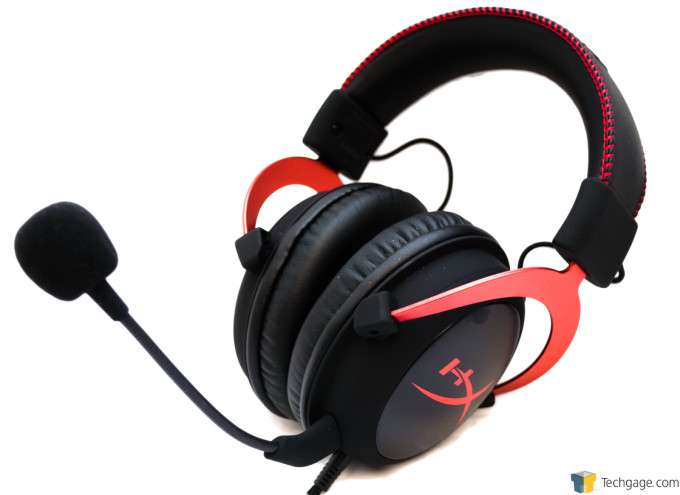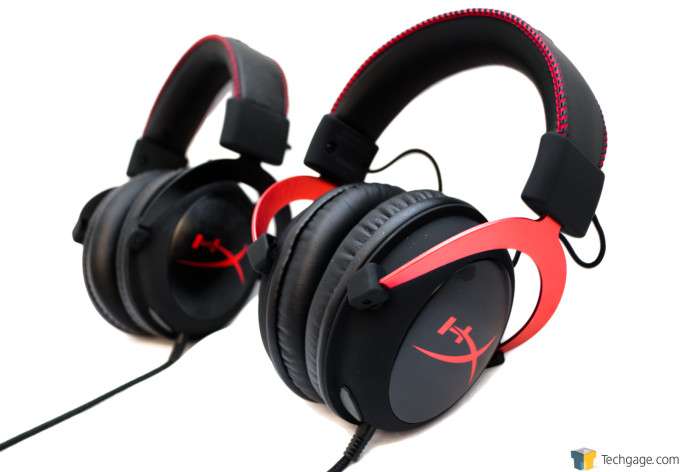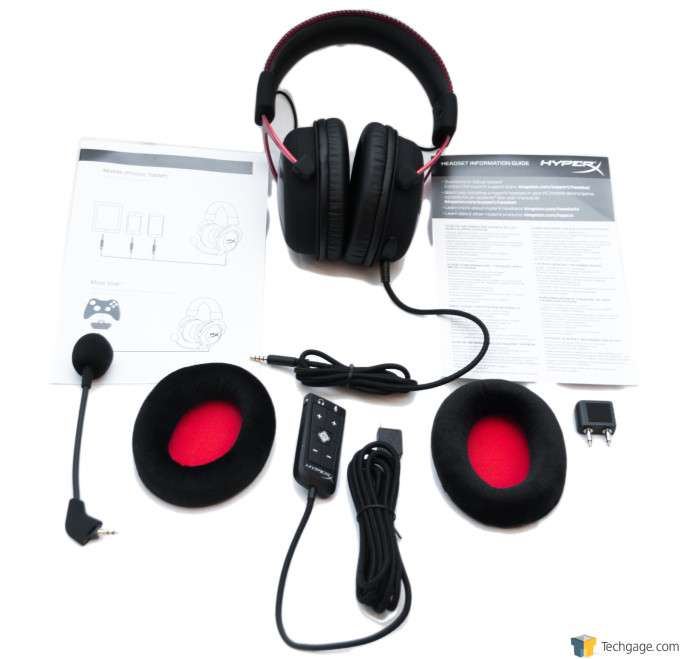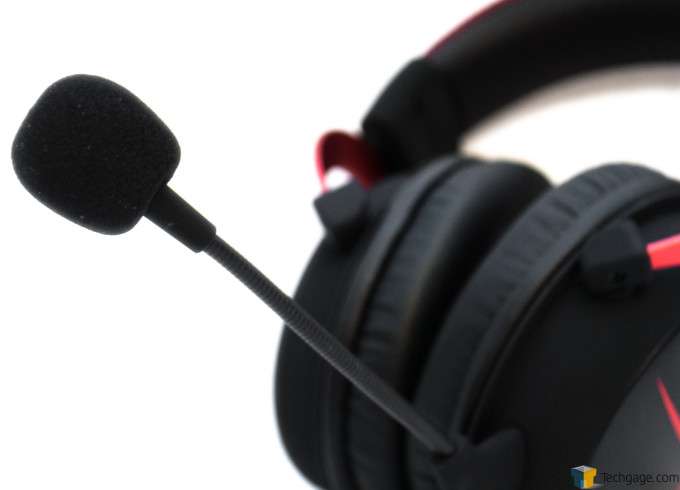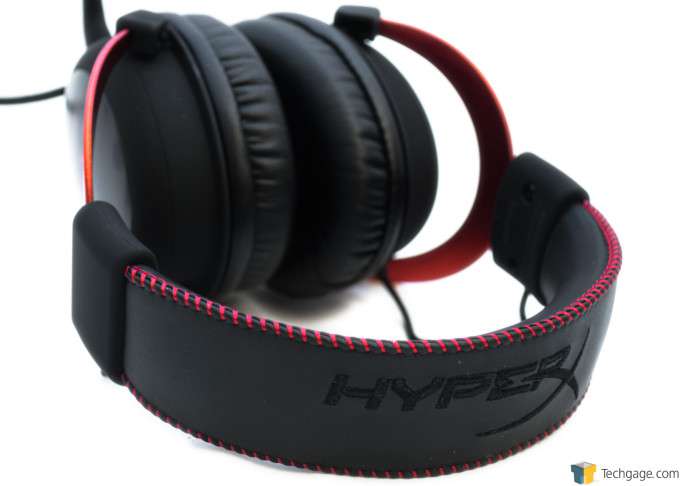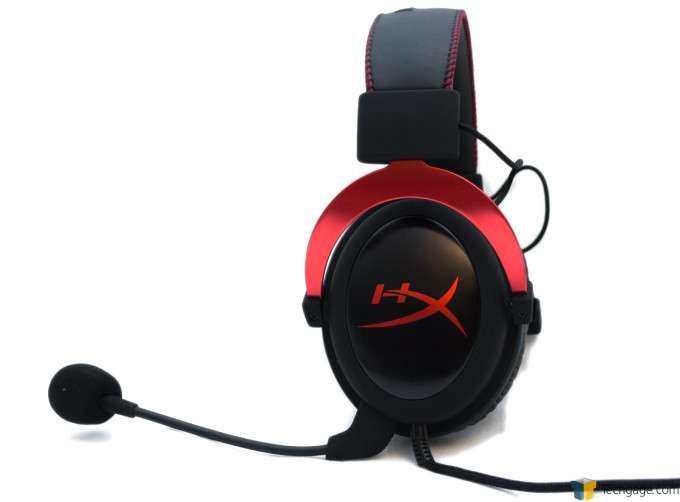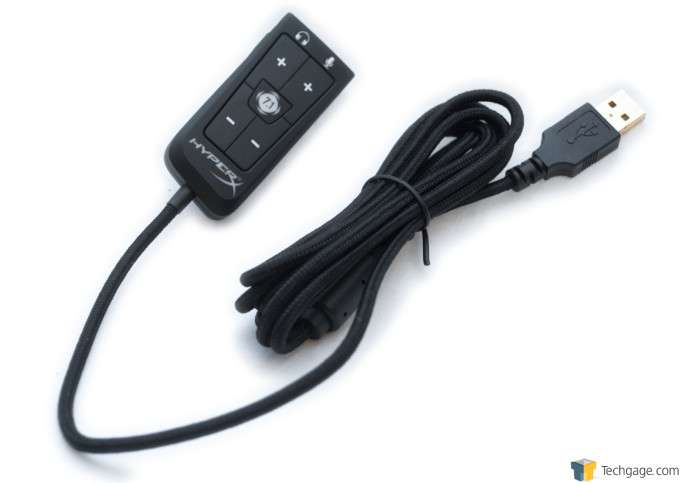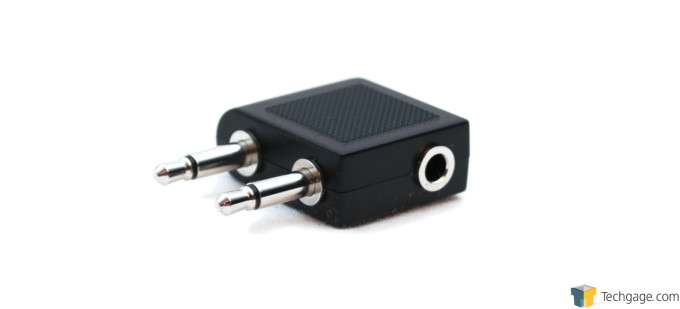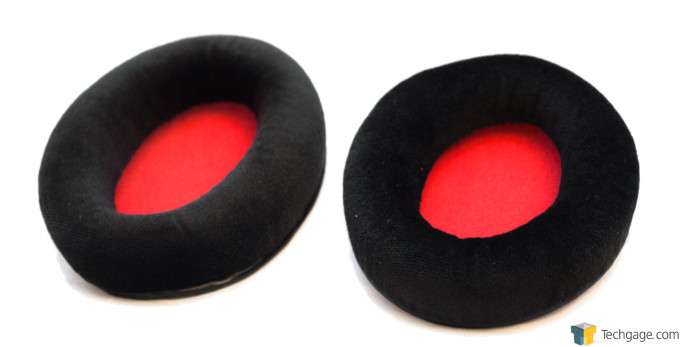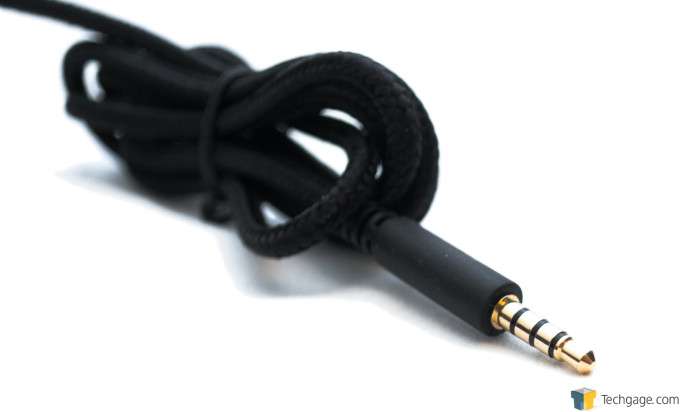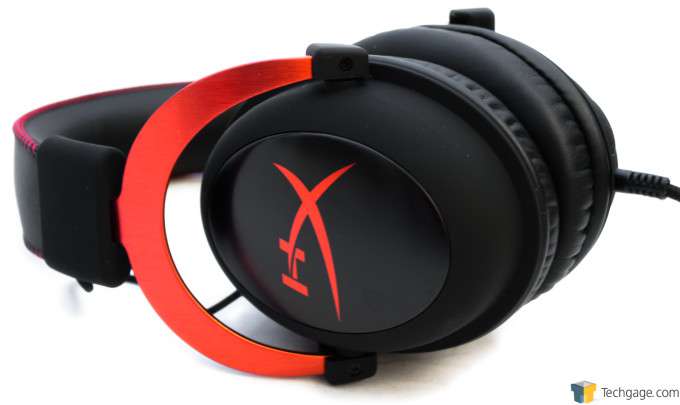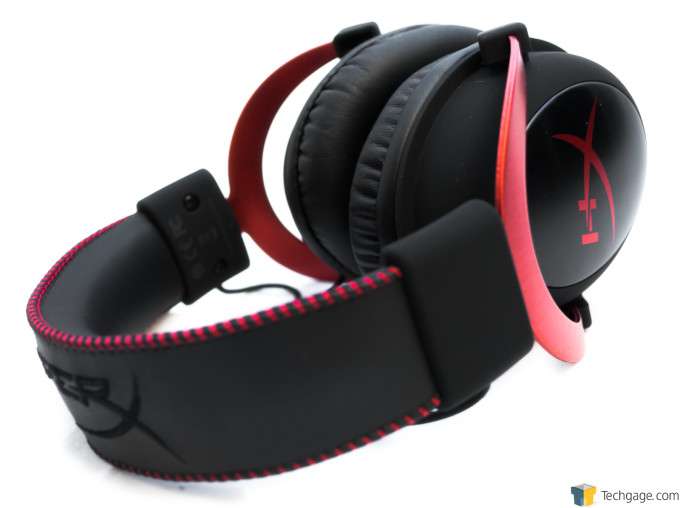- Qualcomm Launches Snapdragon 4 Gen 2 Mobile Platform
- AMD Launches Ryzen PRO 7000 Series Mobile & Desktop Platform
- Intel Launches Sleek Single-Slot Arc Pro A60 Workstation Graphics Card
- NVIDIA Announces Latest Ada Lovelace Additions: GeForce RTX 4060 Ti & RTX 4060
- Maxon Redshift With AMD Radeon GPU Rendering Support Now Available
On Sequels (and Hollywood Twists!) – A HyperX Cloud II Review

Sequels… they’re either blockbusters (The Empire Strikes Back) better than the original or busts (Caddyshack II) that should have never seen the light of day. In the world of PC peripherals, it’s rare when we see a direct follow-up to a product. Kingston, though, bucks the trend with its new HyperX Cloud II gaming headset. Is it a blockbuster, or a bust?
Sequels.
They’re tricky things, aren’t they? Some say that they’re great; they continue a story that’s too big to tell in one sitting. Others, though, think that they’re nothing more than a money grab trying to capitalize on the success of an original story. The audience ultimately decides, though, whether the sequel is a blockbuster worthy of its forebear’s name and legacy, or a bust destined for eternal ridicule and contempt.
So when companies issue an evolution of an older product, what are we to think of that new thing? And we know that the new product is an evolution indeed, since it’s named after the original.
Last year I reviewed Kingston’s very first gaming headset, the excellent HyperX Cloud. Although it wasn’t perfect, I still enjoyed reviewing it and using it.
This time around, though, Kingston has sent Techgage the sequel to the HyperX Cloud, named (quite aptly) the HyperX Cloud II. Since your humble scribe reviewed the first one, Techgage Supreme Commander Rob assigned me the task of evaluating the new one.
Let’s have a look at it, then, shall we?
There she is, the new HyperX Cloud II, the star of this review.
If you read my review of the original HyperX Cloud, you might look at new one and think to yourself, “Uh, this looks the same as the first one! Like, exactly!”
And you’d be mostly right if you did think that.
As you can see, there’s really very little visual difference between the sequel and the original. Visually, the only obvious differences are the color of the headset’s frame – brushed metal finished in a very striking anodized red on the HyperX Cloud II, anodized black on the first HyperX Cloud – and the connectors on the end of the cables. The new Cloud II has a two-in-one 3.5mm combo connector, while the first Cloud has dual 3.5mm connectors (one for the headphone out, one for the mic in). The rest of the visual details, though, are pretty much identical for these two gaming headsets from Kingston.
This next photo shows (almost) the entire supporting cast in the HyperX Cloud II package. Pictured are the headset itself, a flexible mic boom that attaches to the left earcup (the mic jack is protected with a silicone cover otherwise), an extension cable which also houses an inline USB audio control/DSP (digital sound processor) unit, a one-into-two 3.5mm airplane adapter, a pair of red-accented replacement ear pads, a Headset Information guide, and a Quick Start guide. Not pictured is a travel bag (I didn’t check the entire box until later). The upshot is that the added accessories is as comprehensive as the original Cloud’s.
Now for some close-ups.
Here is the mic boom installed. The pick-up is covered in foam; the stalk, meanwhile, is flexible yet does a superb job of staying in the shape you’ve bent it to. There’s no need to keep readjusting it. Just set it and forget it.
You can see Kingston’s fine attention to detail with this shot. I love the red stitching contrasting against the black leather covering the headband. The reverse side has an adequate amount of padding, ensuring comfort over many hours of use.
The view from the side shows that the Cloud II has a fairly simple look to it, except the red accents – the anodized red of the frame, the beautiful stitch work, and that hard-to-miss HyperX logo on the outside of the ear cups – really grab your eyeballs.
Here’s a close-up of the DSP-equipped extension cable. The Cloud II, like the original, is a stereo headset. However, hooking it up to this DSP-on-a-cable and plugging in the USB connector turns the Cloud II into a 7.1 surround sound headset.
And here’s a shot of the airplane adapter.
As with the original, the replacement ear pads are done in a suede-like material very similar to that used by Beyerdynamic. These are also far more eye-catching than the stock ear pads, which are covered by a black leather (or leather-like) material.
The final close-up is of the cable connector. This is combo mic-in/headphone-out 3.5mm connector. That means the Cloud II is compatible with smartphones as-is. Plug in the mic boom, and voila, you’re ready for hands-free communications.
Now that we’ve had our visual tour, let’s move on to some performance testing.
Performance Testing
As with all headsets I test, I evaluated Kingston HyperX Cloud II’s performance in three major criteria: Ergonomics, functionality, and sound quality. I feel that these are the most important points to appraise when it comes to this type of equipment.
In terms of ergonomics, the new Cloud II feels the same on my noggin as the old one did. This only makes sense since the two are practically identical. The fit is snug – not too tight, but tight enough to stay on my head well enough even after “indulging” in some headbanging listening to some really hard-rocking tunes. It’s a comfortable companion even after marathon listening sessions, thanks to the padding on the headband and earcups.
Cable length can be an ergonomic concern: A cable that is either too short or too long would negatively impact user experience. If the cable’s too short, it can limit where you can use your device; too long, then it becomes a little inconvenient to use, or even potentially hazardous (you could trip over excess cable length and fall into an aquarium filled with voracious man-eating piranhas, for example).
The cable – cables, actually, given the extension cable with the in-line DSP module – on the Cloud II is the perfect length for its intended use. Just by itself, it’s long enough for portable devices like your iPod or your smartphone. To use it with your PC, you’d best use the extension cable with its DSP; this endows it not just with the DSP’s capabilities, but also additional cable length as needed. The Cloud II is effectively a modular design, and Kingston must be lauded for the performance and ergonomic benefits this modularity confers.
As good as the Cloud II is ergonomically, it also scores for its excellent functionality. Out of the box it is compatible with all types of devices with a 3.5mm headphone-out jack. Plug the mic boom in, and you can use the Cloud II with a smartphone for hands-free operation. Use it with the DSP cable extension and it’s PC-ready; just plug it into a free USB port, and you’re good to go, with the added function of 7.1 simulated surround sound to boot. The Cloud II is a like a Swiss Army Knife, a headset that covers all of the bases.
Moving on to sound quality, the Cloud II as a stereo headset – i.e., without using the DSP – is as good as they come. For whatever reason, it sounds just that little bit more satisfying than the first Cloud; to my ears the sound quality is on a par with my favorite headset that I’ve ever reviewed for Techgage. Hooked up to my iPod Classic and listening to ALAC files, the Cloud II compares quite favorably with my yardsticks for headphone comparisons, the Beyerdynamic DT880 Pro and the Shure SRH840, monitoring headphones designed for flat-response (or non-biased) playback. Playback through monitoring headphones will be as close a reproduction as the recording artist intended.
To my ears, the Cloud II has a very slight tendency towards cold playback; that is, the sound is just a bit biased towards the treble end of the scale. Bright sounds – think of jangly 12-string electric guitars or metal percussion instruments like a triangle – sound a touch brighter, and sounds in the upper reaches of the mid-range are likewise boosted. The effect, though, is never overdone, so listening sessions are always pleasant. On the other end of the scale, I find that playback of lower frequencies is tight. The bass is never boomy, and there doesn’t seem to be any frequency boosting as there is on the upper end of the scale. I’m really liking the 53mm drivers Kingston equipped the Cloud II with.
Stereo separation is excellent, an effect that’s bliss not just in music playback but in gaming as well. While the cable is short, I use an extender adapter cable for my headphones anyway just for convenience’s sake, thereby mitigating the possible problem with the relative shortness of the Cloud II’s cable. However, most users probably won’t have this kind of set-up; rather, they’d plug straight into the 3.5mm front I/O headphone-out jack if they want stereo output. In this scenario, lack of cable length will most likely be an issue.
On the other hand, if users want to use the Cloud II on the their PCs as a surround sound headset as Kingston envisioned, they’d be well-served. Plug it into an available USB port, press the central “7.1” button on the in-line control pod, and you’ll get a very good simulation of eight-channel surround sound. And you get this benefit without needing to download any special software at all!
In games, especially FPSs like Crysis 3 and Battlefield 3 and 4, the surround sound effect is an advantage. Whether it’s NPCs or firearms or explosions, the Cloud II excels in positional audio. Voices, sound effects and background music all sound clear, if a bit thin.
And it’s the same story with movie playback. As usual, I use the opening scene of Star Wars Episode III: Revenge of the Sith because of the myriad sound sources zipping all over the screen. Clarity and positional audio are great strengths.
Let’s finish this review up.
Final Thoughts
I’ve said often in headset reviews that I’m a stereo snob. For music there’s no other mode of sound delivery that I’d want, and even for games and movies at home I still like stereo over surround sound headsets, whether the effect is simulated or delivered via an array of discrete drivers.
Kingston’s new HyperX Cloud II, though, narrows the gap between my stereo preference and near-abhorrence for surround sound. I’ve reviewed quite a few surround sound headsets for Techgage now, but the Cloud II is the blockbuster among that motley crew. The biggest reason why it’s my favorite out of the bunch, funnily enough, is that it’s by far the best in stereo mode. Not only that, but its compatibility with devices is nigh unbeatable. The only thing I couldn’t use the Cloud II on was my Xbox 360, but that’s because of Microsoft’s frankly asinine (and Apple-like, it must be said) insistence on creating a proprietary audio connector. It’s also the best surround sound solution I’ve yet tested. And in terms of ergonomics, it’s one of the best headsets I’ve had perched on my melon.
Another reason to like the Cloud II is the price. Amazon sells it for $99.99 (with free shipping, if you’ve bought into Amazon Prime). That’s just circa $20 more than the first-gen Cloud’s typical current price. I reckon that’s money well spent. You get a much more elegant cable and surround sound, neither of which is available with the first Cloud.
The two HyperX Cloud models are virtually identical to each other; so far as I can tell, the headset and mic components are. It’s hard to distinguish one from the other in a blind “taste test” in stereo mode, and your eyes certainly can’t if both had the same color scheme and if you covered up the cable ends.
So that begs the question: Is the Cloud II a sequel of the original?
It’s not.
I was tempted to call it a remake, but it’s not one of those. It is, however, the Director’s Cut or a George Lucas-esque Special Edition. The Kingston HyperX Cloud II is not a sequel given that it’s virtually identical to the first, except that it’s been enhanced and improved. Despite the fact Kingston gave the new model a “II” in its name, suggesting it’s “the next chapter,” it’s not an all-new story. It is, however, what the Cloud headset should have been all along.
So how’s that for a Hollywood-style twist?
Pros
- Excellent stereo performance.
- Surround sound option.
- Comprehensive versatility and compatibility.
- Great value.
- Exemplary ergonomics.
- Attractive styling.
Cons
- Surround sound always sounds thinner than stereo.
Support our efforts! With ad revenue at an all-time low for written websites, we're relying more than ever on reader support to help us continue putting so much effort into this type of content. You can support us by becoming a Patron, or by using our Amazon shopping affiliate links listed through our articles. Thanks for your support!




